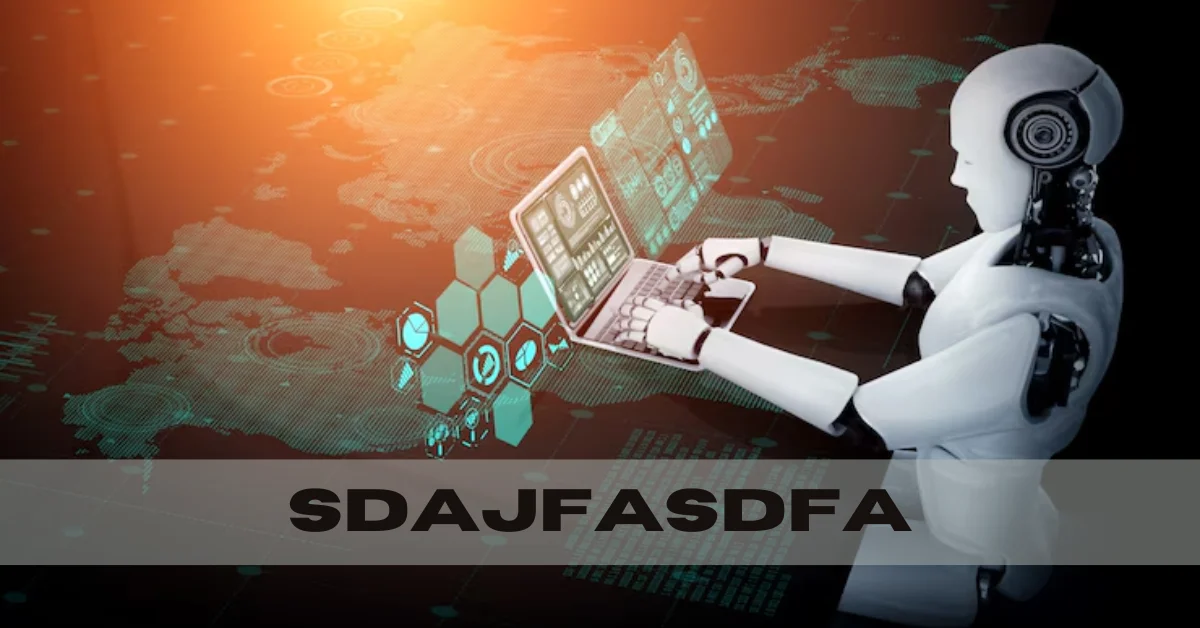Blog
The Rise of Sdajfasdfa in Online Communities

What in the world is “Sdajfasdfa”? If you’ve ever mashed your keyboard in frustration, excitement, or just boredom, you’ve accidentally contributed to one of the internet’s most enduring micro-trends. Once dismissed as gibberish, these random character strings—like “Sdajfasdfa”—have taken on new roles in digital conversations. They’ve evolved from chaotic outbursts into cultural signifiers, humor triggers, and even tribal signals of digital belonging.
In a world increasingly shaped by online communities, randomness is no longer random. It’s a language, a symbol, a meme—and sometimes, even a brand. But why does a meaningless jumble of letters matter? How has something like “Sdajfasdfa” infiltrated our feeds, our minds, and even our keyboards?
Let’s dive into the cultural, psychological, and linguistic journey behind the rise of “Sdajfasdfa” in online spaces.
The Rise of Random Internet Phrases
How Keyboard Mashes Became a Cultural Phenomenon
Random keyboard mashing used to be just a stress relief—smashing your fingers against keys without caring what shows up. But in today’s social media culture, randomness has meaning. Posts featuring strings like “Sdajfasdfa” became a digital shorthand for pure emotion. A post captioned with “Sdajfasdfa” might express overwhelming joy, crushing anxiety, or mindless laughter.
Memes, Trends, and Accidental Virality
Sometimes randomness spreads faster than logic. One viral tweet using “Sdajfasdfa” can inspire thousands of reuses, memes, and inside jokes. The absurdity itself becomes the hook. People love sharing the unexplainable—because it feels universal.
The Psychology Behind Our Fascination
The Human Mind and Pattern Recognition
Our brains are wired to seek patterns, even in noise. When we encounter something like “Sdajfasdfa,” part of us tries to decode it. It might feel like a password, an encrypted message, or a code only a few can understand. This natural curiosity fuels engagement.
Curiosity Triggered by Nonsense
Humans are deeply curious, and the unexplained captures attention better than facts. “Sdajfasdfa” might appear nonsensical, but it provokes thought. What does it mean? Why is everyone using it? This internal questioning draws people into digital conversations where nonsense rules.
Origins of ‘Sdajfasdfa’ and Its Kin
Are They Really Random?
Most so-called random strings aren’t entirely random. “Sdajfasdfa” appears to be created using a mix of keyboard home row letters, which hints at subconscious typing patterns. The inclusion of repeating sequences like “asdf” is very common because they’re easy to type.
Possible Subconscious Typing Patterns
Muscle memory plays a role. When people mash their keyboards, their fingers often land on familiar keys. That’s why so many mashes resemble “asdf,” “jkl,” or “ghjk.” Even in chaos, the human brain imposes structure.
The Role of Social Media in Viral Nonsense

Twitter, Reddit, TikTok and Their Influence
Each platform has its own way of amplifying nonsense. Twitter thrives on fast humor, Reddit on niche humor, and TikTok on trends. A random word like “Sdajfasdfa” might become a trend sound, a video caption, or a meme across these ecosystems, spreading its reach.
User-Generated Chaos Turned Trend
As more users copy and play with the term, it evolves from individual randomness into a collective trend. “Sdajfasdfa” can be re-contextualized across formats, memes, and themes, gaining longevity.
Cultural Interpretations Across the Globe
How Different Cultures Perceive Randomness
In Western cultures, randomness is often seen as a source of humor or creative expression. In Japan, gibberish is occasionally stylized for aesthetic appeal. “Sdajfasdfa” could even mimic stylized kana, appealing to certain fandoms. Other cultures might see it as a form of code, symbol, or even artistic rebellion.
Localized Reactions and Humor
The cultural lens matters. What seems like meaningless mash to one community may resemble a familiar script or phrase to another. This global adaptability is part of why keyboard smashes like “Sdajfasdfa” endure.
Memes as Modern Folklore
From Gibberish to Storytelling
Memes are today’s folklore—passed through posts, updated through formats. Even a string like “Sdajfasdfa” can spark narratives. It might represent the mental state of someone dealing with chaos, or the relief of finishing a stressful task.
Sdajfasdfa and Its Place in Meme History
“Sdajfasdfa” joins the ranks of legendary meme origins—from Pepe the Frog to Doge to “asdfghjkl.” It’s a different category, yes, but it shares the essential trait: it expresses emotion without saying it directly.
Accidental Creativity: The New Aesthetic
Chaos as a Form of Expression
Abstract chaos can be art. In online spaces, randomness becomes aesthetic. There’s beauty in disorder, in the raw and unfiltered. “Sdajfasdfa” captures that better than curated posts ever could.
Embracing the Unintentional
Accidental creativity is becoming increasingly appreciated. It reflects authenticity—something modern audiences crave. When someone types “Sdajfasdfa,” they’re being real, spontaneous, and unfiltered.
The Linguistic Angle

How Linguists Analyze Meaningless Strings
Linguists study how humans create and respond to language—and even pseudo-language. They examine why certain letter patterns feel more satisfying or funny. “Sdajfasdfa” might mimic real linguistic rhythms, making it catchy even when meaningless.
Phonetics and Pseudo-Language
Even nonsense can carry phonetic patterns. Gibberish with repeated consonants or vowel sounds may sound like a real word or phrase in another language. That’s part of why “Sdajfasdfa” can feel familiar.
Digital Anthropology of Keyboard Mashes
What Online Behavior Reveals About Us
Anthropologists now study online rituals, from memes to hashtags to gibberish typing. Keyboard mashes, including “Sdajfasdfa,” often appear during emotional peaks—anger, laughter, panic. These are moments of unfiltered expression.
Modern Digital Rituals
Just like saying “bless you” after a sneeze, typing “Sdajfasdfa” after a surprise is becoming normalized. It’s a ritual of online emotional release.
Brands and Marketing: Capitalizing on Randomness
Trend-Jacking with Nonsense
Surprisingly, some brands incorporate nonsense phrases to appear relatable. A tweet with “Sdajfasdfa” might position a brand as human, humorous, and connected to digital subculture.
When Weird Works in Branding
Weird sells. Random strings catch the eye. They challenge expectations and invite interpretation. Brands that understand digital culture know how to subtly use randomness for authenticity.
When Random Becomes Ritual

Repetition and Meaning-Making
Say something enough, and it sticks. “Sdajfasdfa” may start as a joke, but repetition gives it context and community meaning. It becomes symbolic of a mood, event, or digital in-joke.
Cultural Imprint of Absurdity
Over time, gibberish gets layered with significance. “Sdajfasdfa” isn’t just text—it’s a signal. To those in the know, it’s an emotional code.
The Impact on Language and Communication
New Forms of Digital Shorthand
Random text is the new emoji. Instead of describing panic, we type “ahhhhh” or “Sdajfasdfa.” It’s quicker and often more expressive than full sentences.
Evolution or Erosion of Language?
Critics fear that gibberish is killing language. But history shows language evolves constantly. Gibberish is just the latest form of emotional shorthand—born online, but spreading into everyday life.
The Serious Side of Silly
Academic and Sociological Interest
Yes, scholars are paying attention. “Sdajfasdfa” and similar phenomena are now subjects in digital anthropology, media studies, and psychology. These patterns reveal how we cope, communicate, and build community in the digital age.
Humor, Identity, and Digital Tribes
Typing “Sdajfasdfa” signals that you’re part of the online tribe. It’s like speaking a dialect only your people understand. Humor is the glue, randomness the medium.
Conclusion
So what can we take away from “Sdajfasdfa”? More than you’d think. What began as a chaotic keystroke is now a window into modern human behavior. From the depths of digital psychology to the heights of meme culture, random keyboard mashing has transformed into something meaningful.
It’s spontaneous, it’s raw, it’s honest—and maybe that’s why it resonates. is more than just a jumble of letters. It’s the language of the moment, the emotion behind the screen, and a curious case of chaos turning into culture.
-

 Celebrity6 months ago
Celebrity6 months agoHow Old Is Roux Lopez? WWE Stars Becky Lynch & Seth Rollins’ Daughter
-

 Celebrity6 months ago
Celebrity6 months agoRaquel Pedraza: Former Tennis Player and Taylor Fritz’s Ex-Wife
-

 Celebrity6 months ago
Celebrity6 months agoMary Marquardt: The Untold Story of Harrison Ford’s First Wife
-

 Celebrity6 months ago
Celebrity6 months agoHow Old Is Marina Pearl LeBlanc? All About Matt LeBlanc’s Only Child
















